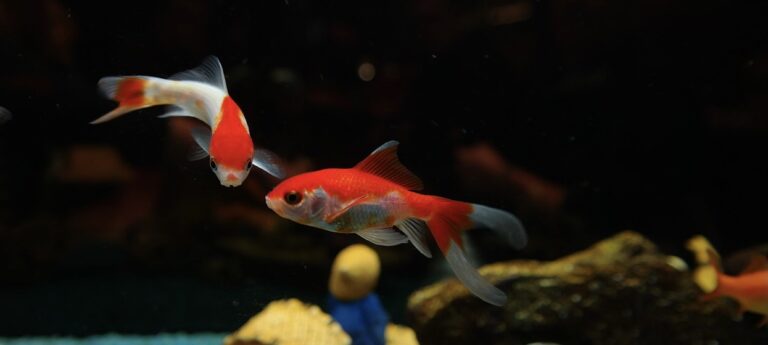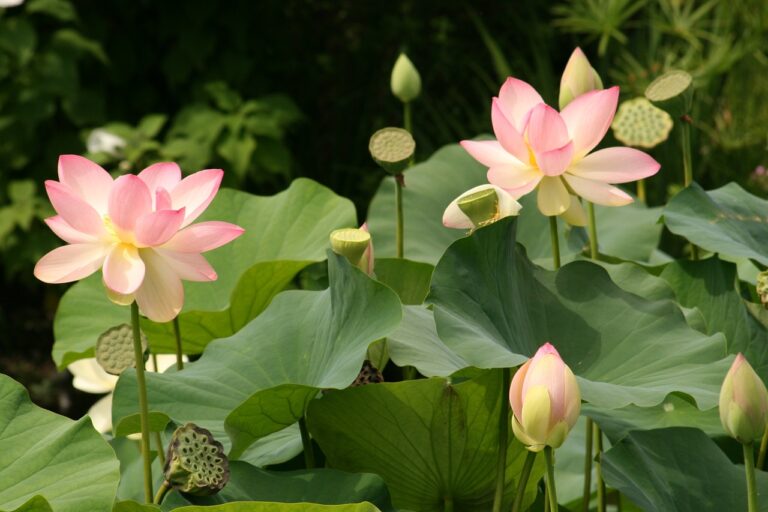Lotus Plants – Easy Steps to Care for Lotus
The Lotus, Nelumbo spp., has been one of the most unusual of all aquatic plants to adorn the water garden pool. All lotuses at Tricker’s aquatic nursery are grown without chemical pesticides or herbicides.
Aroma of the Blossoms: The scent of the lotus blossom is as elusive as it is alluring. During tours of Tricker’s historic nursery, we invite visitors to lean in and inhale the flower’s heady perfume. Their reactions run the gamut from blissful to bewildered, each experience as unique as the individuals themselves. Some call it sweet and delicate, like a lover’s tender embrace. Others sense an earthier, more primal pull, an intoxicating blend of fruit and musk. But one thing is certain – once you’ve been enveloped by the lotus’s mystical aroma, you’ll never forget it. It haunts the senses, remaining long after the petals have fallen away. This enigmatic fragrance captures the imagination and defies description. You simply have to breathe it in to understand its spellbinding power. The lotus’s perfume is a siren song for the spirit, luring you into its otherworldly realm.
With proper care, lotus plants can thrive for many years.
- Lotus plants should have 8+ hours of sunlight per day.
- The water temperature should be between 75 and 87 degrees Fahrenheit.
- Lotus plants are heavy feeders, so be sure to fertilize them regularly. Over-fertilization can damage a small lotus. It’s recommended to fertilize lotus once every 20 days (4-8 grams depending on the size of the pot & type of fertilizer.) after tubers have sprouted and several aerial leaves have developed. Higher nitrogen fertilizer will help the roots to get established in young and newly planted lotuses. Then switch to higher phosphorus fertilizer.
- Lotus plants can be overwintered in the pond or in a warm greenhouse or indoors. Consider a tub garden for this.
Have Issues?
- If the lotus plant is not growing, it may be because it is not getting enough sunlight or the water temperature is too cold.
- If the lotus plant is getting brown leaves. Browning leaves on a lotus plant is a natural part of its life cycle as it prepares for dormancy during the winter months. It is important not to remove these browning leaves until they are completely dead, as they play a crucial role in the plant’s health. While the leaves are dying, the plant is actively storing nutrients in its roots, which will contribute to the growth of the tuber for the next season. Embracing this process will ensure a vibrant resurgence when spring arrives.
- If the lotus plant is getting pests or diseases, treat it with an appropriate pesticide or fungicide.
Fertilizer and Planting Containers: With the right care, these beauties will flourish spectacularly. The secret is starting with a robust foundation. Combine nutrient-rich topsoil with clay to create an ideal growing medium. Our aquatic fertilizers like Praefecta are specially formulated to give your lotus the boost it needs. If clay is hard to find, our AMT fertilizer is a top-notch alternative. As your lotus takes off in growth, keep it well-fed with pellet fertilizers like our Trico. And don’t skimp on space – large containers allow maximum spread for healthy roots and leaves. Give your lotus what it craves, and enjoy the dazzling results! With the proper soil, fertilizer and room to grow, your lotus will put on a show-stopping performance in no time.
When to transplant or Order the Lotus in Your Water Garden Pool. For northern gardeners seeking to overwinter lotus, mid-July is the deadline for planting. When you place your order with us, rest assured that we will ship according to our proven schedule that guarantees on-time delivery. Along with your lotus tubers, you’ll receive our planting guide containing tips and techniques from the experts to support your success in cultivating these aquatic wonders, even through harsh winters.
How to Overwinter Your Lotus: The lotus is a beautiful aquatic plant that can thrive through the winter, as long as you take the right precautions. When those bulbous tubers form in late autumn, make sure to lower them below the frost line before the deep freezes set in. Otherwise, they’ll perish in the icy waters. If your water garden tends to freeze solid, play it safe and move the entire lotus container to a basement or other sheltered spot for the season. Keep the soil moist, but not soggy. Come spring, you can return the lotus to its rightful place in your pond, where it will surely flourish again.







